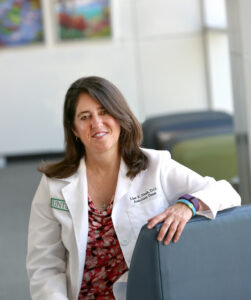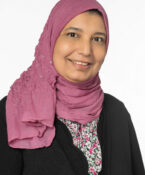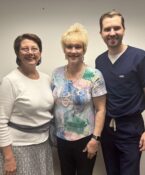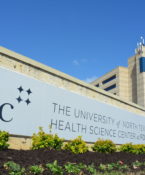TCOM-affiliated dermatology residency program begins in July
- July 10, 2023
- By: Steven Bartolotta
- Our People
Related Links
 The rise in physician shortages across the United States has left many specialties scrambling for answers, but the Texas College of Osteopathic Medicine is addressing the shortfall with a new dermatology residency program that is set to begin in July.
The rise in physician shortages across the United States has left many specialties scrambling for answers, but the Texas College of Osteopathic Medicine is addressing the shortfall with a new dermatology residency program that is set to begin in July.
The residency will have three residents per class with a total of nine positions once fully enrolled. The first three residents begin their training with Dr. Clay Cockerell and other faculty in July.
“We started thinking about this many years ago because there is a growing need for dermatologists in the United States,” Cockerell said. “The average waiting time to see a dermatologist is really long and most people don’t know there is a shortage that’s only getting worse. We were presented with the opportunity to pursue this residency to train more dermatologists, which is one of the hardest specialties to get into in all of medicine, and progressed forward with the program.”
The program was many years in the making. Starting in 2018, Dr. Lisa Nash began the cumbersome process of setting up this new residency program, which on average takes six-to-12 months of planning and preparation for the application. Typically, it’s two more years until a program has been accredited by the Accreditation Council for Graduate Medical Education.
Then COVID-19 came along and slowed the process down even further, but Nash kept pursuing initial accreditation, which came on April 21, 2023 — and not a moment too soon.
The field has seen the average wait time to see a dermatologist increase 33% from 24.3 days to 32.3 days from 2004 to 2017. In 2022, the trend lines continued higher with another increase of seven percent to an average of 34.5 days.
According to the American Academy of Dermatology, the specialty is expected to see a shortage ranging from 3,800 to 13,400 physicians in the coming decades. Despite missing the Match for the Class of 2023, the new TCOM-affiliated residency program had no trouble attracting top candidates for the initial class.
“Even though we didn’t go through the match this year, we found 20-25 people who heard that our program was approved and went through the interview process,” Cockerell said. “We found three excellent candidates who we are very excited about.”
The competitive nature of dermatology as a top specialty is born out in the 2023 match statistics. There were 864 applicants for 499 positions that were offered.
“These students are traditionally among the most academically accomplished in their medical school classes,” Nash said.
 What the new residents will find as they train with Cockerell and his colleagues is a unique dermatology experience. He operates Cockerell Dermatopathology in Dallas, which combines dermatology with pathology. The residents can expect a very classical style of training that will also give them the ability to learn about surgery, pathology, pediatric dermatology, cosmetic dermatology and other sub-specialties of dermatology.
What the new residents will find as they train with Cockerell and his colleagues is a unique dermatology experience. He operates Cockerell Dermatopathology in Dallas, which combines dermatology with pathology. The residents can expect a very classical style of training that will also give them the ability to learn about surgery, pathology, pediatric dermatology, cosmetic dermatology and other sub-specialties of dermatology.
“We are very excited about this opportunity because while we don’t have all the resources of a major academic institution, we do have a great group of dermatologists who are dedicated to teaching,” Cockerell said. “Our residents will be in the clinic seeing patients as well as at our dermatopathology practice where they will get to see many biopsy specimens, including the ones that they take from their patients. Along with very good didactic sessions and lectures, we want our residents to attend various conferences that are local, regional and national.”
The field has grown significantly since Cockerell started his practice decades ago. What was a traditional practice of general dermatology has since expanded into new subspecialty areas such as dermatologic surgery, pediatric dermatology, medical dermatology and cosmetic dermatology, among others. There are also many new treatments and therapeutic agents that were not available in the past.
“There have been a lot of changes in dermatology from when I first started,” said Cockerell said. “There have been dramatic breakthroughs in therapy which has become a major part of our field.”
The specialty is rapidly growing, but the number of residencies isn’t keeping up with the demand. TCOM’s partnership with Cockerell and his dedicated colleagues will help alleviate some of the growing shortages. The program is going to give the residents an opportunity to not just learn dermatology but the versatility of business, finances and even legal issues.
“We want them to become high-quality dermatologists and have expertise in the field, but also in a number of other things,” said Cockerell, who also has two MBA degrees and a JD degree. “I want them to feel comfortable to be able open their own practice if they choose and understand the business and legal aspects of medicine, which is so lacking in medical educational programs, so they won’t be a deer in the headlights when they graduate. We also will expect them to develop an area of expertise so they can be known as an expert on some topic when they graduate from our program.”






Social media